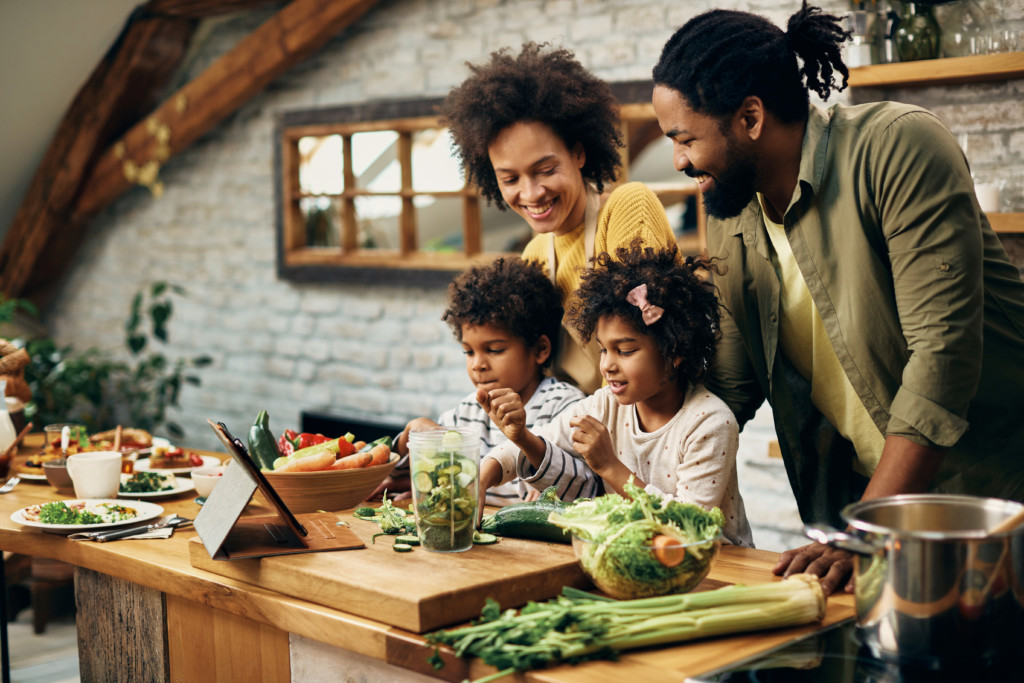Article Source: United States Environmental Protection Agency
Planning, prepping, and storing food can help your household waste less food. Below are some tips to help you do just that:

Planning and Shopping Tips
Making a list with weekly meals in mind can save you money and time. If you only buy what you expect to use, you will be more likely to keep it fresh and use it all.
- Keep a running list of meals and their ingredients that your household already enjoys – that way, you can easily choose, shop for, and prepare meals that you are likely to consume.
- Look in your refrigerator, freezer, and pantry first to avoid buying food you already have. Make a list each week of what needs to be used up and plan upcoming meals around it.
- Plan your meals for the week before you go shopping and buy only the things needed for those meals.
- Make your shopping list based on how many meals you’ll eat at home. Consider how often you will eat out, if you plan to eat frozen precooked meals, and if you will eat leftovers for any of your meals.
- Include quantities on your shopping list noting how many meals you’ll make with each item to avoid overbuying. For example: “salad greens – enough for two lunches”.
- Buying in large quantities (e.g., buy one, get one free deals) only saves money if you use all the food before it spoils.
- Buying food from bulk bins can save you money and reduce food waste and packaging as you can purchase the amount of food you need as opposed to a pre-determined amount. When buying in bulk, remember to store food properly in airtight, labeled containers.
- Purchase imperfect produce or upcycled products. Imperfect produce may have physical imperfections but is just as safe and nutritious and can sometimes be found at discounted prices. Upcycled products are made from ingredients that might have otherwise gone to waste.
Storage Tips
- Properly store fruits and vegetables for maximum freshness; they’ll taste better and last longer, helping you to eat more of them before they go bad.
- Most veggies, especially those that could wilt (such as leafy greens, carrots, cucumbers, and broccoli) should go in the high humidity drawer of the fridge.
- Most fruits, as well as vegetables that tend to rot (such as mushrooms and peppers), should go in the low humidity drawer of the fridge.
- Some fruits (such as bananas, apples, pears, stone fruits, and avocados) release ethylene gas as they ripen, making other nearby produce ripen, and potentially spoil, faster. Store these away from other produce.
- Wait to wash berries, cherries, and grapes until you’re ready to eat them to prevent mold.
- Some produce, such as potatoes, eggplant, winter squash, onions, and garlic, should be stored in a cool, dry, dark, and well-ventilated place.
- Make sure you are properly storing food in your refrigerator.
- The refrigerator door is the warmest part of the fridge. You can store condiments there, but it is not recommended to store milk or eggs in the door.
- The lower shelves are the coldest part of the fridge. Store meat, poultry, and fish here.
- Refrigerators should be set to maintain a temperature of 40 °F or below.
- Store grains in airtight containers and label the container with the contents and the date.
- Befriend your freezer and visit it often. Freeze food such as bread, sliced fruit, meat, or leftovers that you know won’t be eaten in time. Label with the contents and the date.
Cooking and Preparation Tips
- Produce that is past its prime, as well as odds and ends of ingredients and leftovers, may still be fine for cooking. Repurpose these ingredients in soups, casseroles, stir fries, frittatas, sauces, baked goods, pancakes, or smoothies. You’ll avoid wasting these items and may even create a new favorite dish.
- If safe and healthy, use the edible parts of food that you normally do not eat. For example, stale bread can be used to make croutons, beet greens can be sautéed for a delicious side dish, and vegetable scraps can be used for soup stock.
- Learn the difference between “sell-by,” “use-by,” “best-by,” and expiration dates.
- Aim to cook and serve the right portions for the number of people you are feeding.
- Freeze, pickle, dehydrate, can, or make jam/jelly from surplus fruits and vegetables – especially abundant seasonal produce.
- Don’t leave perishable food at room temperature for more than two hours.
- Refrigerate or freeze any leftovers in small, clear, labeled containers with a date.
Toolkit for Your Home and Your Community
The Food: Too Good to Waste Toolkit will help you figure out how much food is really going to waste in your home and what you can do to waste less. By making small shifts in how you shop for, prepare, and store food, you can save time and money. It can also keep the valuable resources used to produce and distribute food from going to waste!
Food: Too Good to Waste also contains an Implementation Guide that is designed to teach local governments and community organizations how to implement a Food: Too Good to Waste campaign in their community using the Toolkit.
If You Can’t Reduce Wasted Food, Divert It From Landfills
- Nutritious, safe, and untouched food can be donated to food banks to help those in need.
- Compost food scraps rather than throwing them away. Learn more through this infographic on composting
